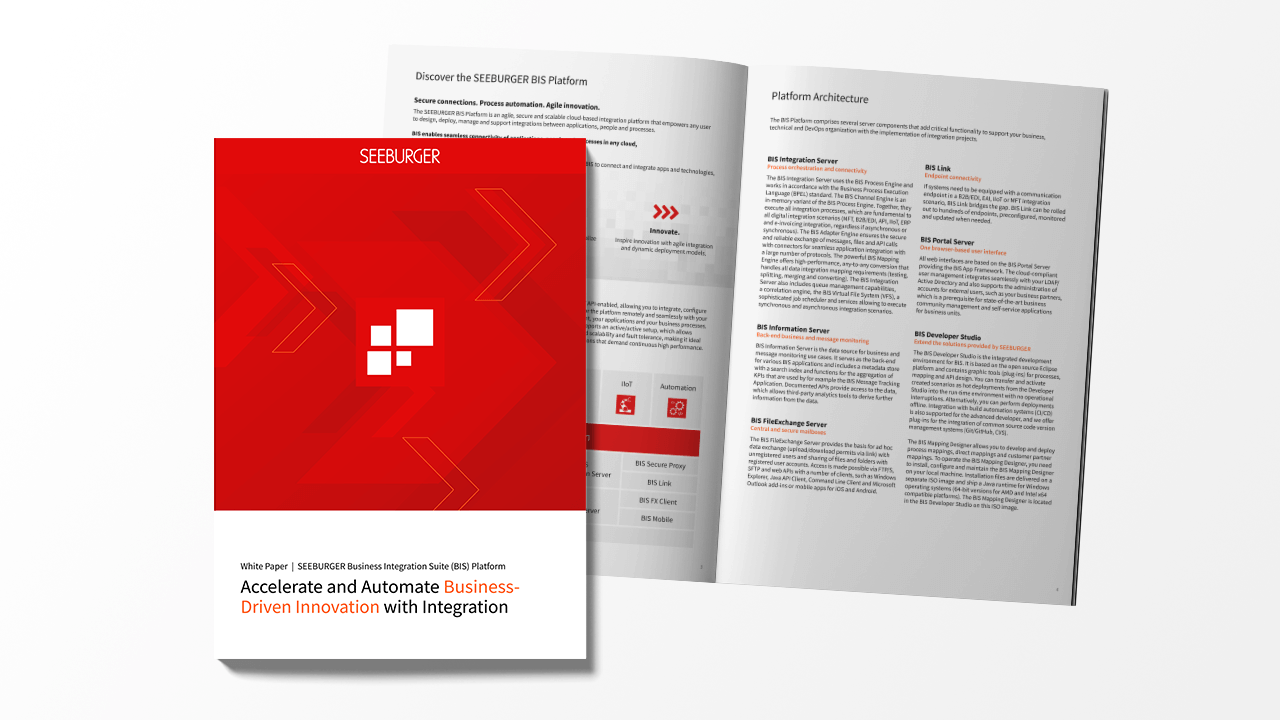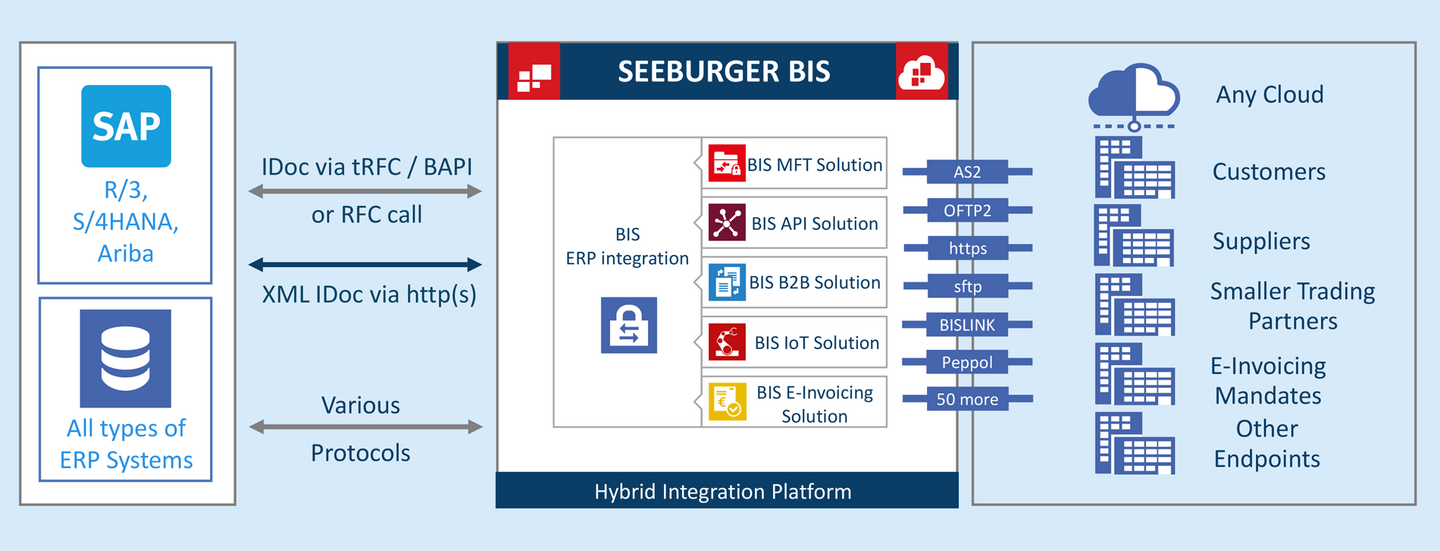
Compare EDI vs. API for B2B Integration
Electronic Data Interchange (EDI) plays an important role in the integration of external B2B systems and trading partners since decades. Application Programming Interfaces (APIs) provide selected system functions in real time, which can be accessed and used by other applications. If APIs are built for it, they can be used for B2B Integration as well. So it is worth to compare EDI vs. API so that you can choose the right approach for your next B2B Integration project!
EDI vs API Track Record
Particularly in supply chain-oriented industries, EDI sets the standard for exchanging information from system to system in an electronic format without the need for paper and manual processes. EDI has been connecting trading partners and automating Supply Chain Management (SCM) since the 1970's. With EDI the data is exchanged in a structured form which, over time, has led to several EDI messaging standards in various industries and regions. EDI continues to dominate supply chain processes for the automotive, logistics, CPG and retail, manufacturing and utilities industries.
EDI uses a file-based or batch communication style with asynchronous calls.
APIs have a long track record as software interfaces to web services and systems. The concept APIs represent today resulted from the Service Oriented Architecture (SOA) movement and the rise of REST and web services over HTTP since the year 2000.
For today’s B2B transactions, APIs are more suitable for real-time business processes and are intended for a more synchronous communication style. Representational state transfer (REST) or RESTful web services provide API interoperability and allow the access and change of textual representations of web resources using a uniform and predefined set of stateless operations.

How do EDI vs API Compare?
EDI and API are both integration technologies. Due to their respective origin and purpose, there are differences between EDI and API.
| EDI | APIs | |
|---|---|---|
| History | Established since the 1970s and have grown over time | SOAP available since ~2000, REST raising in Cloud context |
| Transport Protocol | Various protocols including AS2, AS3, OFTP2, SFTP and many more | HTTP/S as underlying transport protocol for API calls |
| Call Pattern | Asynchronous call with acknowledgement messages for structured data | Synchronous call for real-time exchange of structured data |
| Message Format | EDIFACT, ANSI X12 and others based on standardized formats | XML (for e.g. AS4), JSON (for REST) |
| Format Description | Message Guidelines | Open API standard (Swagger), WSDL |
| Directory of Available Formats | Relevant EDI Guideline | API Catalog of API Provider |
| Data Size | Capable of handling mass data | Not intended for mass data |
| Typical Scenarios | Batch-driven processing of bundled information - System-to-System - Data conversion of bundled information - B2B/EDI connection to external trading partners via AS2, OFTP2 or VAN | - Information request of modular single requests close to real time - Real-time booking in sequential steps - Enterprise Application Integration (EAI) - Connect to API-enabled cloud applications |
| Content Error Handling | Due to asynchronous batch processing with files this typically takes places in the application (e.g. ERP) that books the received files | Due to the synchronous approach, any error typically stops the API call and error handling takes place at the sender side |
| Standards | Highly standardized with industry-specific flavors | No widespread and established standards |
| Business Drivers | Driven by process optimization and cost reductions in long term business partnerships | Driven by digitalization and monetizing of data, open up new ways of integration, incl. “ad hoc” |
Figure 1: Comparison Table EDI vs API
Technically, it would often be possible to replace well-established EDI B2B integration technologies with APIs. However is such a replacement just possible or is it also feasible?
The optimal business value comes with the right choice for the use case, which can be derived along the lines of the above comparison table.
EDI and API on One Platform
EDI and web services APIs can work together seamlessly and complement each other. Thus, APIs are part of a reasonable B2B integration strategy today adding real-time access for a holistic approach of all sorts of B2B transactions. Real-time and file based batch process are complementing each other seamlessly if these processes are running on the same platform and can interact with each other.
The SEEBURGER BIS Platform is one cloudbased platform, which empowers exactly this approach. BIS offers over 55 different communication adapters enabling all sorts of B2B integration scenarios including not only EDI and API but also MFT, IIoT and E-Invoicing.










